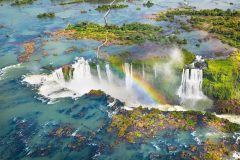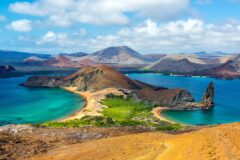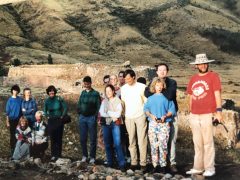

Iguazú Falls FAQs
What is the best time to visit Iguazú Falls?
The best time to visit Iguazu Falls depends on your priorities. For the most dramatic water flow and fullest falls, visit between December and March when rainfall is highest and the Iguazu River is at its peak. However, this is also the busiest and most humid period. For more comfortable weather with fewer crowds, March to May and September to November offer an excellent balance – pleasant temperatures, moderate water levels, and the falls are still impressively full. June to August is the coolest and driest period with lower water levels, but you’ll see more exposed rock formations and individual cascades. Ultimately, Iguazu Falls is spectacular year-round, and there’s no bad time to visit.
Can you do Iguazú Falls in one day?
Whilst it’s technically possible to visit Iguazu Falls in one day, we don’t recommend it. To properly experience both the Argentine and Brazilian sides of the falls, you need at least two full days – one day for each side. The Argentine side alone has several walking circuits that take 4-6 hours to explore thoroughly, including the unmissable Devil’s Throat. The Brazilian side, though more compact, deserves a full morning or afternoon to appreciate the panoramic views. If you’re short on time, prioritise the Argentine side for its variety of perspectives and walkways.
Is Iguazú Falls one of the Seven Wonders of the World?
Yes, Iguazu Falls was officially recognised as one of the New Seven Wonders of Nature in 2011. The falls were chosen for their exceptional natural beauty, ecological significance and cultural importance. Both Iguazú National Park (Argentina) and Iguaçu National Park (Brazil) are also UNESCO World Heritage Sites.
Is Iguazú Falls in Argentina or Brazil?
Iguazu Falls straddles the border between Argentina and Brazil. The majority of the individual waterfalls (around 80%) are located on the Argentine side, while the Brazilian side offers the best panoramic views of the entire waterfall. The Iguazu River forms the natural border between the two countries at this point, creating the spectacular horseshoe-shaped cascade. We recommend visiting both sides to fully appreciate the falls – the Argentine side for close-up encounters with individual cascades, and the Brazilian side for breathtaking wide-angle vistas.
Can you take helicopter rides?
Yes, from the Brazilian side. An aerial perspective reveals the true magnitude of Iguazú Falls. From high above, the 275 individual cascades appear as ribbons of white water threading through emerald jungle. The view encompasses the entire 2.7km crescent of falls, the winding Iguazu River, and the protected wilderness of the national parks stretching endlessly in every direction.
Is Niagara Falls bigger than Iguazú Falls?
Iguazú Falls stretches nearly 2.7km across the Iguazú River, making it almost twice as wide as Niagara Falls. Now that’s big!
If you still have questions, please contact us and one of our Travel Experts will be happy to help.
Papagaio
Your edit for Latin American inspiration
Our exciting range of articles on Latin America explore everything from iconic destinations and lesser-known cultural gems to delicious traditional recipes. You’ll also find exclusive travel tips, first-hand client reviews and the chance to get your personal questions answered by our travel experts.
View Extraordinary Inspiration






































